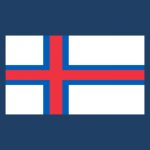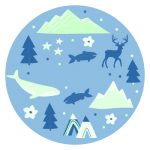The Faroe Islands, a remote Nordic archipelago in the North Atlantic Ocean, hold a unique and intriguing place in the world. As a self-governing territory within the Kingdom of Denmark, this breathtaking land boasts a rich history, unique culture, and a striking natural landscape. In this blog, we will explore some fascinating facts about the Faroe Islands, including its official language, political landscape, geographical features, and more.
Official Language and Language in Education:
The official language of the Faroe Islands is Faroese, a North Germanic language closely related to Icelandic. Faroese serves as the primary medium of communication, and it is also the language of instruction in the islands’ schools. This reflects a strong commitment to preserving the Faroese language and culture, which has been the case since the 19th century.

Nordic Country with a Unique Government:
The Faroe Islands are an autonomous Nordic country with their own government. The Faroese government is responsible for various domestic matters, including education, culture, and fisheries, while foreign affairs and defense are managed by the Danish government. This arrangement has allowed the Faroe Islands to maintain a unique cultural identity and legislative authority while benefiting from Danish translation services.
Ninth-Century Origins:
The history of the Faroe Islands dates back to the ninth century when Irish monks and Norse settlers first arrived. These early settlers, who were predominantly of Norse origin, laid the foundations for the Faroese culture and way of life that we see today.
National Football Team and Sporting Achievements:
The Faroe Islands have a national football team that competes in international competitions. Given the remote location of the islands, their sporting achievements, particularly in football, are remarkable. The national team’s journey to recognition in international football is a testament to the Faroese spirit and dedication.

Volcanic Activity and Geographical Features:
The Faroe Islands are characterized by their dramatic and diverse natural landscape. They are part of the North Atlantic Igneous Province, a region known for volcanic activity. The islands’ rugged terrain, steep cliffs, lush valleys, and pristine fjords make them a paradise for nature enthusiasts and outdoor adventurers.
The Faroe Islands experience heavy rainfall, with the climate being characterized by a temperate maritime subarctic climate. This climate fosters a unique natural environment with a variety of flora and fauna. The islands are home to several bird species, and their natural vegetation includes mosses, lichens, and wildflowers.
The Faroe Islands are known for their isolated population and their reliance on an archipelago of 18 inhabited islands. Despite the isolation, the Faroese people have built a vibrant and resilient community, deeply rooted in their culture and traditions.
The Smyril Line is a vital transportation link connecting the Faroe Islands to the outside world. This ferry service plays a crucial role in facilitating trade, tourism, and the movement of people to and from the islands.
The Faroe Islands have traditionally had a relatively high fertility rate, contributing to the stability and growth of the Faroese population. This demographic factor has helped the islands maintain their cultural identity and economic well-being.

The stunning landscapes and unique culture of the Faroe Islands have attracted the attention of National Geographic and other international publications. These features have helped showcase the islands to a global audience.
The 20th century witnessed significant political developments in the Faroe Islands. The islands’ quest for greater autonomy led to the establishment of self-government in 1948, which marked a turning point in their history.
The Faroe Islands have a multi-party system, with several political parties participating in the democratic process. One notable party is the JF (Union Party), which has played a prominent role in Faroese politics.
In addition to its national football team, the Faroe Islands have national teams in various sports. The islands are also home to a medical school, providing education and training for aspiring healthcare professionals.

Education is highly valued in the Faroe Islands, and the government has invested in modern school buildings to ensure a high standard of education. The islands also have a helicopter service that serves as a lifeline for transportation, particularly in the challenging terrain.
Traditional Faroese cuisine includes foods such as blubber from pilot whales and pilot whale meat. While this practice is a contentious issue, it remains a part of Faroese culture and culinary heritage
The Faroe Islands are a remarkable and unique destination with a rich cultural heritage, stunning natural beauty, and a strong commitment to preserving their language and way of life. Despite their isolation, the Faroese people have managed to thrive and make a mark on the international stage, making these islands a captivating and unforgettable place to explore.
Flatey Island: Cultural Majesty
Flatey Island, nestled amidst the majestic beauty of the Shetland Islands, holds a rich cultural heritage and is renowned for its dramatic fjords and mountainous landscapes. Designated as a UNESCO World Heritage Site, this remote island boasts breathtaking views over landscapes engulfed in Gaelic cultures. From undersea volcanoes to rocky shores adorned with coral reefs and rocky outcrops, Flatey Island is a trading post steeped in history and powerful images of prehistoric settlement. However, its isolated nature poses unique challenges, including the threat to women in certain traditional practices and the perpetuation of men-only spaces. Despite these complexities, Flatey Island remains a capital city of resilience, with initiatives such as breast screenings and education combating societal inequalities. As visitors traverse its rugged terrain, they’re greeted with the haunting melodies of billions of cicadas and the hum of South Africa’s rainbow flag, a symbol of unity amidst diversity. Amidst the beauty lies an invisible killer—volcanic eruptions—reminding all who dwell here of the delicate balance between nature’s wonders and its formidable power. Yet, amidst the tranquility and the rise of river surfing amongst bored teenagers, Flatey Island’s allure endures, a testament to the resilience of the human spirit amidst nature’s grandeur.
In the picturesque landscapes of the Faroe Islands, beautiful lakes adorn the rugged terrain, offering serene reflections amidst the tumultuous beauty of volcanic craters. Amidst the daily rhythm of Faroese society, where regular coffee fuels conversations, the islands hold tales of folklore, including stories of virgin birth and mythical creatures. Yet, amidst the tranquility, there are reminders of the harsh realities of life, with tales of dead calves and the challenges of medieval farming etched into the island’s history. Despite these challenges, the Faroe Islands remain home to iconic species, resilient communities, and a rich cultural heritage that continues to thrive amidst the timeless beauty of the land and its people.
Imagine a “vampire summer,” where the ultimate destination combines thrilling hiking trails with stunning vistas. Amidst this enchanting landscape, hikers navigate through lush forests and rugged terrain, discovering hidden gems and breathtaking views along the way. However, amidst the allure of outdoor adventures, there’s also the risk of obesity due to sedentary habits and unhealthy food choices. To counter this, tried-and-true tips emphasize staying active, enjoying nutritious meals, and staying hydrated under the summer sun, ensuring a balanced and fulfilling experience in nature’s embrace.
FREQUENTLY ASKED QUESTIONS
- National Geographic is drawn to the Faroe Islands due to their stunning landscapes, unique culture, and intriguing wildlife, making them a subject of interest for exploration and documentation.
- National Geographic produces a variety of content about the Faroe Islands, including articles, photographs, documentaries, and videos, showcasing the islands’ natural beauty, cultural traditions, and wildlife.
- National Geographic often covers topics such as the rugged landscapes, traditional Faroese culture, wildlife encounters, sustainable living practices, and environmental conservation efforts in the Faroe Islands.
- You can access National Geographic’s content about the Faroe Islands through their website, magazine, television channel, social media platforms, and various other media outlets where they publish their content.
- National Geographic occasionally organizes expeditions or tours to the Faroe Islands, allowing travelers to experience the islands’ beauty firsthand and learn from National Geographic experts about its culture, history, and natural wonders.







